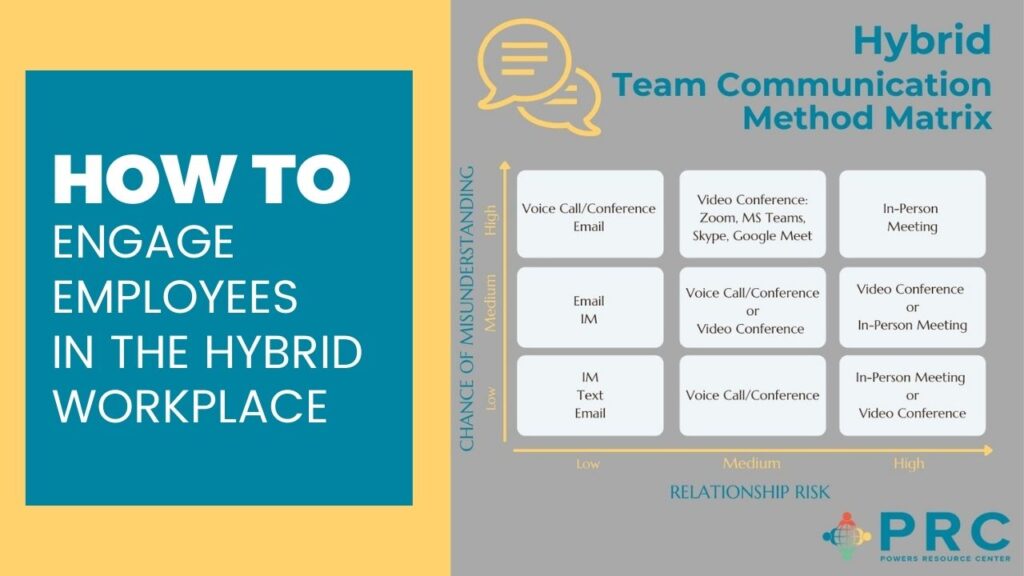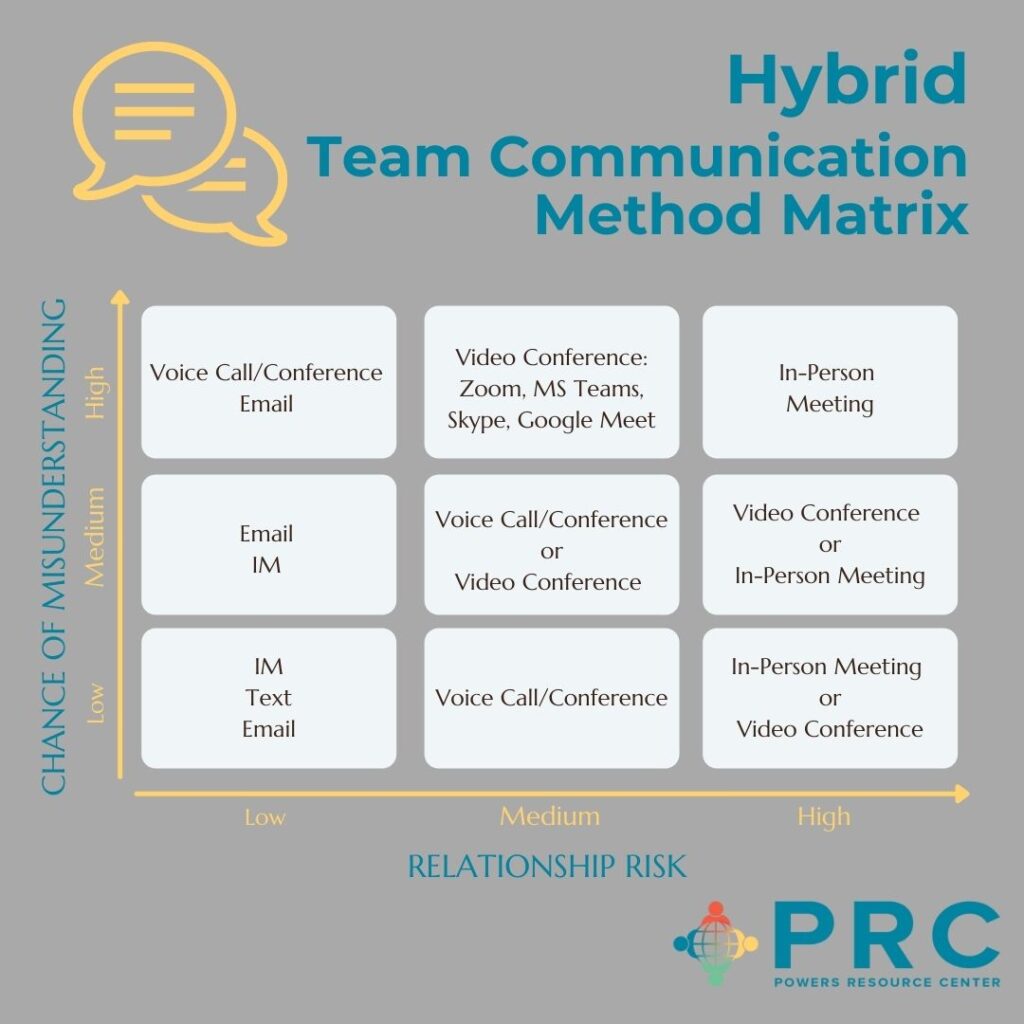Remote, Hybrid, or In-Person: What is the right mix and why does it seem like no one is getting what they want? How an effective communication strategy can combat employee disengagement.
The post-pandemic era has forced EVERYONE to work differently. As companies turn to what’s next, leaders are facing new challenges in assessing their team’s needs and wants while developing expectations. There is a delicate balance of keeping good employees v. what actually works for meeting company goals.
Employees in many cases are loving the new world of flexible scheduling, working from home, and more freedom. They are often in the driver’s seat with low unemployment and a shortage of qualified talent. An extensive new Korn Ferry report finds that by 2030, more than 85 million jobs could go unfilled because there aren’t enough skilled people to take them. Managers are finding themselves with a whole new set of issues and questions to address in trying to guide their teams in this new reality. There is a consistent and growing emphasis on keeping employees engaged and happy and decreasing turnover, but at what cost? Post-COVID-related project delays will continue, causing major effects on companies’ bottom lines.
Turns out, disengagement leads to turnover and it is very costly. Gallup’s State of the Global Workplace: 2021 Report identified a global employee engagement rate of 20%-34% in the U.S. and Canada. The lost productivity of not engaged and actively disengaged employees is equal to 18% of their annual salary.
- For a company of 10,000 employees with an average salary of $50,000 each, disengagement costs $60.3 million a year.
- Replacing workers requires one-half to two times the employee’s annual salary. So, it costs $9,000 a year to keep each disengaged worker and between $25,000 and $100,000 to replace them.
So, what is the best way to keep employees engaged? Does providing better technology resources really help? Globally, companies are investing $4 trillion into technology, but it may not be addressing the human element of disjointed communication and divergent expectations in the future of work.
“Having a clear plan for anticipating these growing workplace challenges is key,” explains Tara Powers, CEO of Powers Resource Center. “Most of our clients are struggling to effectively manage workers that are literally all over the place. The hybrid work environment is bringing its own unique pain points into focus and underscoring the importance of developing good communication practices.”
The big question is how to communicate effectively while still encouraging meaningful connections when your team is virtual or hybrid. It boils down to choosing the right communication method for the situation.
Consider two important questions when choosing your communication purpose and intent:
- What’s the chance that the message could be misunderstood? If the message is highly technical or contains a lot of details, consider if the receiver of the message has the knowledge and skills to understand or comprehend it.
- What’s the risk to the relationship? Think about your current relationship with this person or group. Have you had a recent conflict, an experience that has damaged trust, or are you having to deliver a difficult message? If yes, then consider the risk to the relationship and if the receiver(s) may misunderstand the message or make assumptions about your intent. Ask yourself: Do I know the receiver(s) well enough that they will interpret my intent correctly? Do they trust me and believe that I have their best interest in mind?
Depending on your answer to these questions, you can choose the right method of communication. The virtual team communication method matrix can help you determine what method of communication is best to use, ranging from impersonal to more personal methods of communication. If employees feel their questions and concerns are addressed with care and thoughtfulness, they are more likely to trust the message and invest in the decision or solution.
Implementing strategies to retain employees while continuing to meet organizational goals is not new. However, companies may need guidance and tools for managing their virtual or hybrid workplace. At PRC, this is our sweet spot! We specialize in assessing organizational health and building meaningful connections. In our work with virtual teams, we’ve spent decades developing effective assessment tools and building frameworks for developing the most connected teams possible.
For more information on our custom tool kits, virtual team trainings, or other leadership development resources, explore our website or give us a call at 720.893.2258.
Related Posts
-
7 Habits of Highly Effective Virtual Teams
Stephen R Covey wrote the groundbreaking Seven Habits of Highly Effective People. In the spirit of his book, I have a few ideas about effective virtual teams. It’s kind of a passion of mine. My research and my book Virtual Teams for Dummies continue to motivate…






